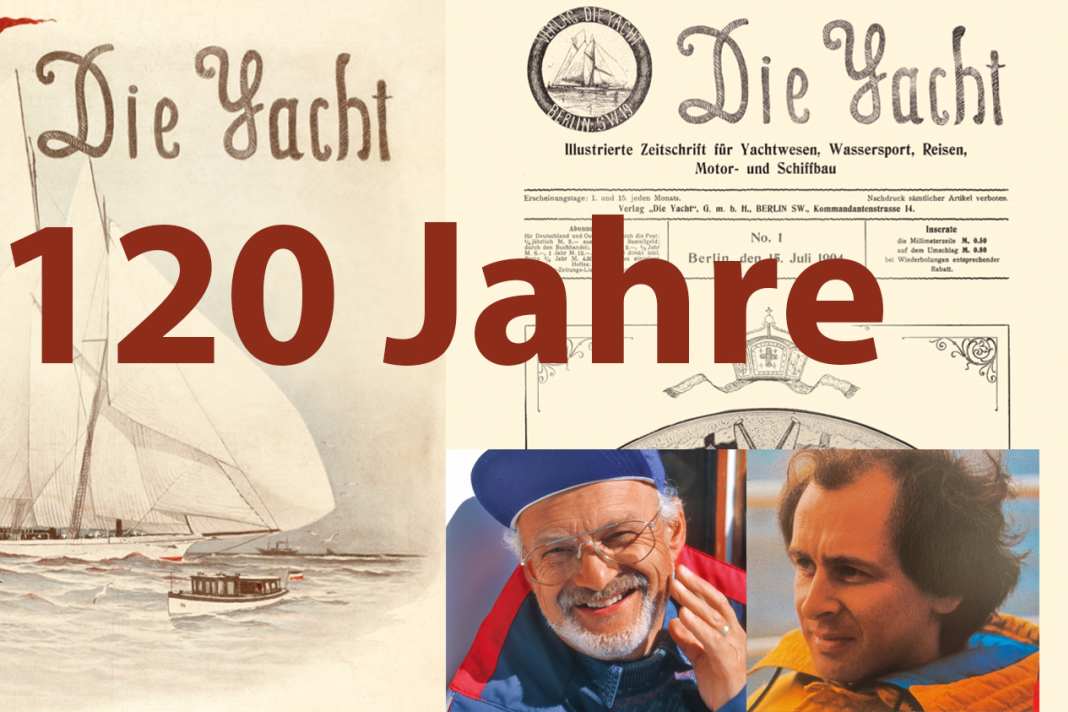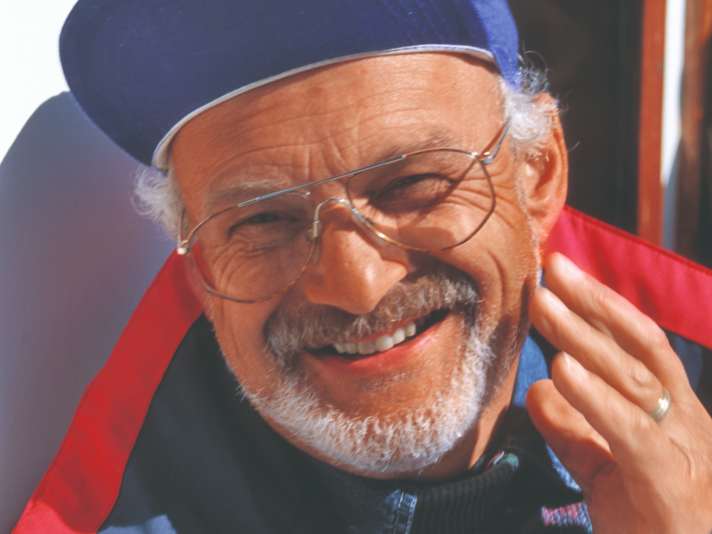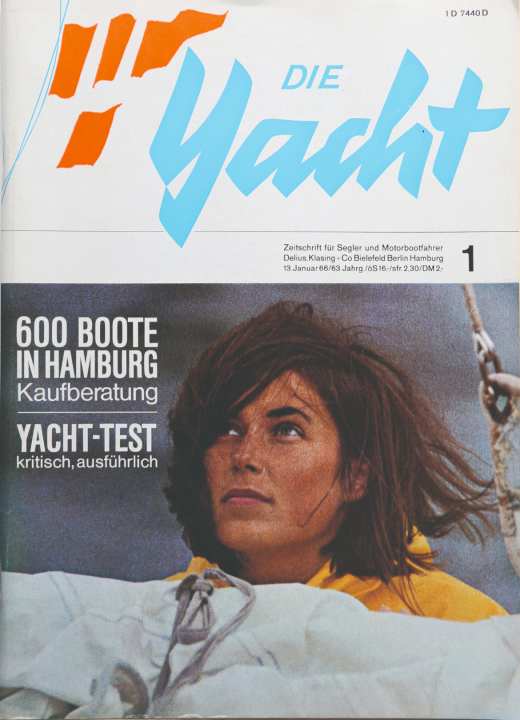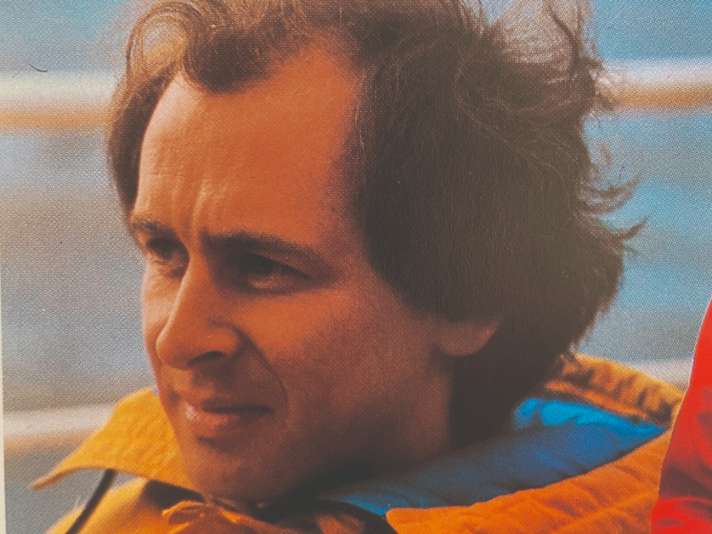





Click here for all articles
A foreword by Martin Hager, Editor-in-Chief
It has been 120 years since YACHT was first published. On 15 July 1904, the "Illustrierte Zeitschrift für Yachtwesen, Wassersport, Reisen, Motor- und Schiffbau" went on sale for the first time - for 50 pfennigs at the time. Number 1, of which exactly one copy still exists in our editorial archive, had 30 pages and was illustrated with 25 photos and a full-page painting. Pleasure sailing", as our colleagues from the past so beautifully described our favourite hobby, was still reserved for the wealthy at the time and the number of private yachts was very limited. But the sport of sailing was already a source of admiration everywhere.
Thanks in part to the America's Cup, which premiered more than 50 years before the first edition of YACHT. Since then, it has guaranteed top sailing performances as well as great spectacle. This year, we can look forward to another exciting chapter in the battle for the famous silver jug.
How times have changed. Today, America's Cuppers fly over the regatta course on razor-sharp foils at 100 kilometres per hour, driven by athletes clad in impact protection waistcoats, helmets, ski goggles and functional clothing that are more reminiscent of modern gladiators than sailors. And our cruising sailing has also long been accompanied by marine diesel engines and often sophisticated electrical systems. Plotters, GPS and autopilots have grown on us. Does that diminish the fun of the sport, of travelling with the wind? Not at all.
Even if times change, sailing is and remains the most beautiful thing in the world!
Harald Schwarzlose, former editor-in-chief
You - stop - here - again!"
How Harald Schwarzlose came to YACHT more or less by chance - and became its longest-serving editor-in-chief
My key experience dates back almost half as long as YACHT is old. It happened 56 years ago in the most unlikely place imaginable: on the escalator of a large department stores' in Hamburg. My friend Kai Krüger is going down, I am on my way up. When our paths and gazes cross, he shouts: "Come down!"

Krüger is editor-in-chief and has an idea. "You can write," he says. "And you can sail too. We need an editor!" That's how my career change began. Not without doubt. Because, well, I had already written a few equipment tests for the magazine - but starting there as a permanent editor? "I can't even type," I reply. After all, I'm an advertising salesman.
The application
I still go to an appointment at the editorial office. Combining my job with my hobby - I think it's a good fit. Sitting next to Kai in the conference room are three interested-looking gentlemen: publishers Kurt and Konrad Wilhelm Delius and YACHT editor Horst Stern. "So, you want to be an editor," he says. "Do you have any idea about journalism?" - "I have an idea," I reply, "but not in practice. I can sail and I have a boat, a pirate," I add, not without pride. Kai confirms: "We know each other from sailing." Horst Stern replies: "Let's just give it a try!"
The first working day
A few months later, I find myself in an office on Magdalenenstrasse in Hamburg, where the owner of the building says with a sweeping gesture: "The great Axel Caesar Springer used to sit here." Of course, this makes little impression on me, especially as the office is pitch black because a huge copper beech tree in front of the window swallows up all daylight.
I'm working on a vintage Olivetti typewriter and struggling to produce a text. After every keystroke in the two-finger search system, an inner voice whispers to me: "You - stop - here - again!" I still don't know why I never followed this voice. But I do know that I was absolutely right to stay. Because I was to experience a time of new beginnings, the heyday of boatbuilding.
The first yacht tests appeared back then, in the late sixties, and they fascinated me. Together with the test gurus Robbert Das and Lex Pranger, I soon travelled to Holland, Denmark and the Mediterranean to test boats.
Back then, at the end of the seventies, sailing ships around 27 feet were already considered yachts. For most cruising sailors, they epitomised seaworthiness. We bring entire fleets together for comparative tests and pit the boats against each other. There is a huge amount of interest in this, and the circulation is increasing and increasing. The technology is also developing rapidly. Glass fibre-reinforced plastic constructions are replacing the wooden yachts that were still widely used a short time ago. And boats are soon being built in large series at comparatively favourable prices.
However, if a visionary had told me back then that the time would come when giant trimarans would fly around the world on extendable wings in 40 days, I would have declared him insane without hesitation.
The rise of the YACHT
In the eighties, YACHT experienced a real boom. The editorial team grew to over 30 employees; there was even a branch office in Munich with three employees who were supposed to cover the sailing scene in southern Germany, Austria and Switzerland as well as the Mediterranean.

The magazine, which is now highly profitable, is constantly pouring money into the accounts of Delius Klasing Verlag. This encourages publisher Horst Stern to print the first colour cover. Until then, only black and white printing had been possible for cost reasons. Stern sensibly chose a young woman in oilskins as the cover girl, which caused some irritation, especially among older readers. After all, sailing still has a reputation as a "men's sport". The cover motif should remain an exception, but not the colour print. It won't be long before YACHT is published entirely in 4c, which in turn will give it a new lease of life.
The position of editor-in-chief
In the meantime, I have grown with my tasks as an editor and yacht tester and, as a career changer, have become something of an establishment. When Kai Krüger announced one day that he was moving to the news magazine "Spiegel", the search for a new captain began. However, the publishers couldn't find anyone who seemed suitable, so they were forced to appoint me as interim editor-in-chief.
Once again, the premise is: "Let's give it a go!" From now on, I am in charge of the fortunes of the Sailing Bible, with all the ups and downs that occur over time. And there are certainly downs in these years of seemingly limitless growth. In the area of conflict between conviction and turnover, between readers' and publishers' interests, there are a few pitfalls to navigate.
A row with the publishers
For example, there is this advertiser who wants to place an entire campaign for the "Waterbike" - a water scooter that he imports from Japan. It would be a big job. But I say no. "I'm not putting these water bikes in the paper!" Because I had seen them whizzing around in quiet bays between peacefully anchored yachts, spreading noise, stench and swell.
My stance not only causes irritation among publishers, but also real annoyance. After all, you can't reject adverts without further ado unless they violate the law or morality.
That, I argue, is exactly what applies to the water hooligans. Nevertheless, the publishing house on Siekerwall in Bielefeld is already discussing whether I'm still viable for YACHT. My job is on the line. But then the matter sorted itself out. The customer switches his campaign to sister magazine BOOTE without further ado.
So in the end I, the embarrassment candidate who only ended up at YACHT by chance, will have been editor-in-chief for 25 years - the longest time that an editor has been in charge of the magazine in the past 120 years.
And I continue to work for Delius Klasing Verlag as an editor and book author. In the end, this adds up to more than 40 unforgettable years. I would never have dreamed of the fateful events that my meeting with Kai Krüger on the escalator would trigger.
Konrad Delius, former publisher
Sailing has no grandstands. But it has always had the "YACHT"
What made the magazine so unique from the imperial era to the present day
It's a magazine's birthday, and what a birthday it is: 120 years! Hardly any other magazine in the world can look back on such a long and successful history. For comparison: "auto, motor und sport", which was still published under the title "Das Auto" in 1949, is only celebrating its 75th anniversary. "Brigitte" turned 70 in May and "Capital" 62 in June. This certainly gives YACHT an exceptional position.

It is thanks to many: the readers, who often keep their subscriptions for decades. The editorial team, which is unrivalled in terms of strength and expertise. And the publishing team, which works passionately to maintain its unique market leadership, which applies not only to the printed magazine, but also to the increasingly important digital business.
My father once said at an awards ceremony in Hamburg: "Sailing has no grandstands." It often takes place far out on the water, where, unlike football, tennis or athletics, there are no stands. But sailing has always had the YACHT, which has been able to bring the fascination of sailing to life for everyone since the imperial era. Perhaps that is why it has remained so unrivalled to this day.

